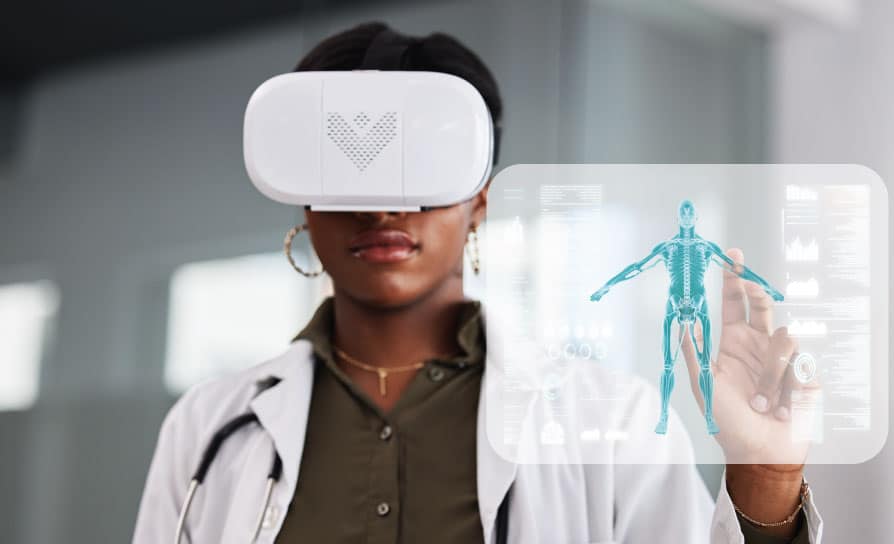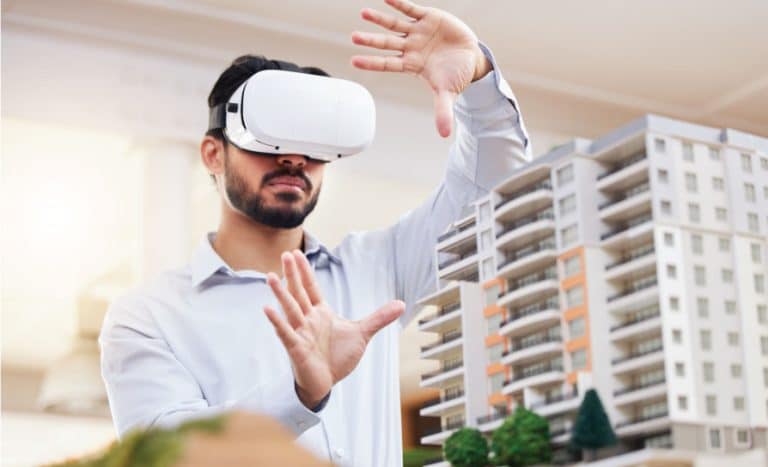Metaverse:
A metaverse is a fictional universe or virtual space that offers immersive experiences to the users, leveraging technologies such as virtual reality headsets (VR), augmented reality headsets (AR), IoT, 5G networking, edge computing, etc. Users can interact with each other, virtual avatars, and other entities to enjoy lifelike experiences on the metaverse.
Even though the technology is a hit among gamers and enthusiasts, it suffers from a perception issue where people view the users as disconnected from reality by wearing headsets and living in a digital world. Having said that, the metaverse technology has great commercial potential, and it’s estimated to have $3-4 trillion in economic impact by 2030.

What are the building blocks of Metaverse?
The following things make up Metaverse:
Infrastructure such as AR/ VR devices and other accessories, the software running on the devices, 5G/ WIFI networking that connects devices to the cloud, etc
Content that is developed to offer a metaverse experience to users, such as games, entertainment, training content, live event recording (ex: live concert streaming), the virtual world (ex: secondlife app), etc.

Use Cases:
Event streaming:
Live music concerts are being streamed on VR, so remote audiences can enjoy immersive experiences of the virtual event
Wedding ceremonies are being streamed on VR, during COVID times, so that guests can virtually attend the ceremonies in a safe environment
Healthcare:
Training:
Emergency operations:
Manufacturing:
Maintenance/ Repairs:
AR systems can assist workers spot/ recommend the fault locations and suggest how to fix them. Example: complex machinery equipment that requires an expert worker to rectify, now with AR and Artificial Intelligence, an average worker could get assistance to perform his duty in a much quicker time, raising productivity to a new level
Virtual stores:
Construction:
Real estate:
Fashion:
Sales & Marketing:
E-commerce websites can enable AR/ VR models of their products so that customers can view them in 3D without having to physically visit the stores. Ex 1: IKEA has an AR feature on their app to view their products in the customers’ rooms as though they are physically present. Ex 2: Myntra, an online clothing store, has an AR feature on its app wherein customers can try on new clothes virtually and select the best options before buying.
Video conferencing/ Meetings:
The metaverse can host virtual meetings and conferences that are more engaging and interactive than regular video calls. Let’s say a conference such as Dubai EXPO is hosted on the metaverse, then the virtual attendees can explore the virtual booths and interact with others in real-time, as though they are physically present there.
Metaverse use cases in the training of front-line workers for emergency situations:
The metaverse offers a cost-effective and efficient way to provide training in safe, virtual environments that can be used in a wide variety of environments and scenarios. The immersive nature of the metaverse provides effective and faster knowledge transfer than traditional learning. With VR headsets students can learn realistic situations in a risk-free environments. Ex 1: health care professionals can be trained to deal with trauma patients through immersive role-playing. Ex 2: military personnel can be trained to deal with stress during combat situations right from the ground station. Ex 3: Firefighters could be trained in several real-life scenarios without putting themselves in danger. Ex 4: Bomb squads could be trained on several dangerous scenarios without exposing them to the dangers of making mistakes.
Improve the productivity of frontline workers by augmenting with additional knowledge and real-time support, so the worker can save time. Ex: An AR headset worn by a parcel inspector can inspect the contents using computer vision algorithms in a fraction of a second which otherwise would take several minutes for a human worker.
Metaverse use cases in civil aviation:
Pilot Training: Flight simulators are turning to metaverse eliminating the need for large displays and physical controls, by simulating a full immersive experience of real-world flight scenarios to student pilots with the use of AR/ VR headsets, where the students can gain valuable experience in a controlled/ safe environment.
Crew Training: Flight attendants and cabin crew can be trained about all aspects of various airplane models in the fleet, and how to handle emergencies, all in a controlled/ safe environment.
Passenger experience: (a) booking: passengers could experience different travel classes such as First, Business, Premium, and Economy, by experiencing it first hand on the airplane metaverse (b) check-in: passengers could pick their seats by experiencing it first hand on the airplane metaverse, (c) pre-boarding: immersive shopping experience enabling shopping passengers to try on products virtually, (d) in-flight: passengers could be educated on emergency procedures such as using an oxygen mask, operating the exit door, using safety jacket, locating the nearest exits, etc., (e) in-flight: a full 3D immersive entertainment experience not confined to a small screen, etc.
Digital twin in manufacturing: airplane manufacturers will be able to build a complete 3D model of the airplane on the metaverse to conduct various simulations and identify design issues. This can help in faster turnaround times for producing and launching new models in the market
Metaverse use cases in Government sectors:
Learning: Metaverse enables a cost-effective and efficient way to provide training, for example, students from remote villages can experience an immersive training program happening 1000s of miles away in the comfort of their local village office.
Collaboration: Metaverse facilitates collaboration and information-sharing to increase efficiencies and cooperation, for example, geographically distant teams can use immersive virtual models to plan construction, test new models of citizen engagement, study disaster, and calamity-affected areas to implement emergency procedures, etc.
Simulations/ Digital Twins: Metaverse enables spaces that can act as test beds for new programs, products, or services. Virtual models of cities and countries (ex: Singapore, Dubai) can be used to enhance urban planning or to simulate scenarios related to climate change.
Government Services: Metaverse can replicate existing services to improve the public’s accessibility to and engagement with government agencies, example 1: town hall meetings can be conducted virtually, allowing citizens to participate in real-time regardless of their physical location, example 2: virtual embassies and service branches can help governments provide better services and more information to citizens.
Reimagined experiences: The metaverse can be used to design new experiences for the masses, such as virtual tourism spaces that promote cultural events or offer tours of historical sites.


